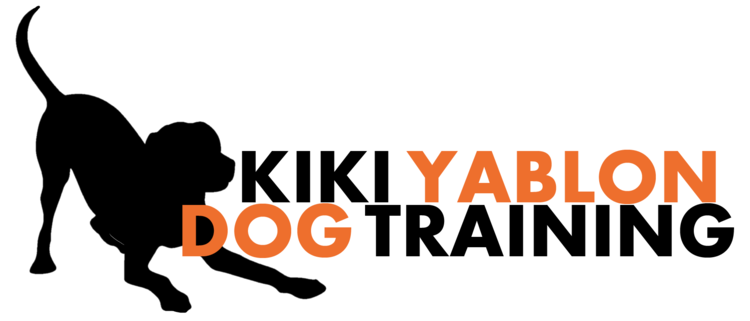One of my “particular interests” is in how to minimize extinction (where behavior that has worked before stops working), and its unpleasant side effects (often labeled “frustration”), in situations where a lack of reinforcement is pretty much unavoidable.
Lots of long duration, persistent barking--if we can agree to call that "frustration"--has been shaped up by a combination of ignoring (extinction), either intentionally or simply because people are busy with something else, and then finally redirecting (reinforcement). The dog learns that the situation (i.e., person is talking to a computer or phone, guests are over, people have their hands full cooking) is when this type of barking is needed or will work to produce an outcome they want or need.
As some know, I’ve written about, talked about, and even done a little research toward the question of how we might reduce the amount of frustration that a dog will experience when, inevitably, a person can’t respond to their requests right away.
One way I think holds great promise (and it has a research base with humans already) is to teach the dog signals for when the behavior will work and when it won’t, or when there will be a delay that they need to wait through--sort of like telling a kid "I'll be on the phone for 20 minutes; do what you want within reason but I won't be able to talk to you or get you a snack until I'm off unless it's an emergency."
Since we can’t simply state “rules” to a dog, we have to teach them what the conditions for reinforcement are (and aren't) through experience. That means looking at all the “cues” that may currently tell the dog barking will work and changing them in some salient way before changing what we reinforce and when. (A lightbulb about changing the environment first went off for me during a talk by Jesus Rosales-Ruiz called "Don't Fight Extinction" at ClickerExpo a few years back.)
In the conditions under which the problem already occurs, you are likely to see the dog keep trying even after you stop reinforcing, because when their behavior has worked on a slot-machine type schedule, it’s hard for them to tell that it’s no longer going to be effective even sometimes.
One approach I've tried in the past is to add something to the problem situation for the new rules to get attached to. The change in the antecedent conditions can help clarify when reinforcement for the unwanted behavior is not available, and also ideally become the cue that new, more desirable behavior will be reinforced a little later.
But another, arguably less intrusive approach is to look for conditions that already cue the behavior you want, and see if you can transfer them into the situation where the dog barks.
Earlier this year, I discussed this idea with a new client whose dog persistently barked at, climbed on, pawed, and licked her while she was trying to talk on Zoom in her dining room. He had apparently done well as she Zoomed through COVID lockdown, but when Zooms became a less common occurrence again, this behavior started. The first thing we tried was removing all the toys, treat containers, etc. from the Zoom setting, but the behavior started right away and went on for probably half an hour during our evaluation, growing more frantic.
I should add that this pup leads a lovely and enriched life, with lots of off leash time in the country and attention and training from his human. She had tried preventively reinforcing a settle during Zoom with treats, and giving food toys or chews in advance of calls, but as soon as the goodies ran out, the dog would go back to these behaviors, and because she was trying to work on Zoom she would feel compelled to quiet him by feeding again or refilling the toys.
After our discussion, she came up with the critical information we needed: When she cooked or baked in the kitchen, she had never reinforced her dog for settling with food or done much training at all; she simply had gone about her business regardless of what the dog was doing, and the dog had typically laid down near the warm bottom of the fridge or on a doormat while she worked. I loved this, because she didn’t take away a recipe from our discussion—she took away the core concept and was able to apply it to identify a situation in which the behavior she wanted was already occurring.
So we moved her laptop and a chair to her kitchen utility cart, and in 12 minutes his barking and climbing decreased quickly in intensity and he laid down on the doormat. I’m kicking myself for not recording that session, but above is a screenshot.
Doing Zooms at the kitchen table instead of the dining room table was a comfortable alternative for this client right away. And eventually, she was able to transfer the scene back into the dining room, where she has so far been able to take short Zoom meetings again.

